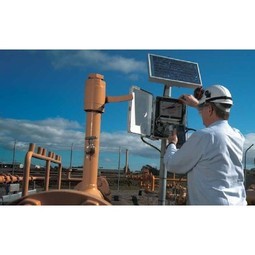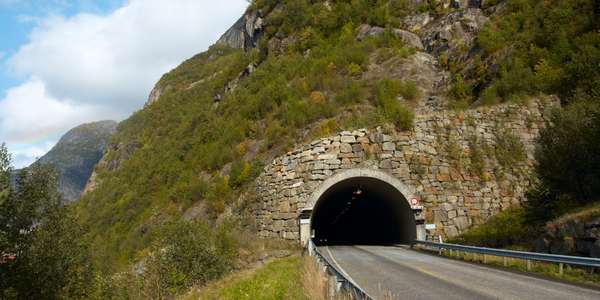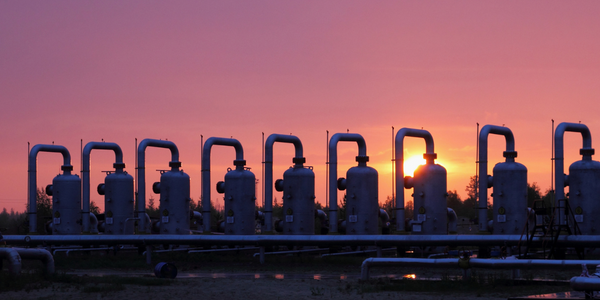Customer Company Size
Mid-size Company
Region
- Europe
Country
- United Kingdom
Product
- Trimble Business Center - HCE
- Trimble GCS900 3D Grade Control System
- Trimble Site Positioning Systems
- Trimble SPS852 Base Station
- Trimble SPS930 Total Station
Tech Stack
- 3D Design Models
- GPS-based Site Positioning Systems
- CAD Files
Implementation Scale
- Enterprise-wide Deployment
Impact Metrics
- Cost Savings
- Productivity Improvements
- Customer Satisfaction
Technology Category
- Functional Applications - Remote Monitoring & Control Systems
- Analytics & Modeling - Predictive Analytics
Applicable Industries
- Construction & Infrastructure
- Utilities
Applicable Functions
- Process Manufacturing
- Quality Assurance
Use Cases
- Predictive Maintenance
- Machine Condition Monitoring
- Remote Asset Management
Services
- Software Design & Engineering Services
- System Integration
About The Customer
Ground Developments (GDL) is a leading civil engineering contractor based in Scotland, specializing in earthworks, roads, and sewer work. The company is known for its expertise in geotechnical and remediation work, providing innovative solutions for complex construction projects. GDL has a reputation for delivering high-quality work and has been involved in various significant projects across Scotland. The company is committed to using advanced technology to enhance its operations and improve project outcomes. With a focus on efficiency and accuracy, GDL partners with technology providers like SITECH and Trimble to leverage cutting-edge tools and systems in its projects. The company's dedication to innovation and excellence has made it a trusted name in the civil engineering industry.
The Challenge
Ground Developments (GDL) was tasked with carrying out specialist geotechnical and remediation work for the Cowdenbeath Wetlands Project initiated by Scottish Water. The project aimed to treat heavily-polluted stormwater from two separate overflow streams in the area. GDL was appointed by Barhale Construction to evolve a remediation scheme and construct technically challenging geotechnical solutions for the wetland treatment facility. The surrounding wetland area was also selected to be transformed into an ecosystem that adds to the diversity of wildlife in the area. To achieve greater efficiencies, GDL sought the help of its technology partner SITECH and Trimble. The challenge was to manage, analyze, and process construction data effectively to ensure high-quality work and timely completion of the project.
The Solution
To address the challenges of the Cowdenbeath Wetlands Project, GDL equipped its dozers, excavators, and Deep Soil Mixing (DSM) equipment with the Trimble GCS900 3D Grade Control System. The 3D design data for the machines was prepared using Trimble Business Center - Heavy Construction Edition (HCE). This software allowed GDL to manage, analyze, and process construction data effectively. The team used Business Center - HCE to build 3D design models from initial site topo surveys and CAD files. The software's 'flag' system helped identify potential conflicts in the data, enabling engineers to address issues before construction work began. GDL also utilized Trimble Total Station and GPS-based Site Positioning Systems to support site construction works. The Business Center - HCE software facilitated real-time data flow between the office and the field, allowing design changes to be sent directly to machine operators through in-cab control boxes. This eliminated the need for time-consuming and costly trips to the project site. GDL also used the software's Data Prep module to elevate 2D contours quickly, turning CAD data into 3D models for initial analysis. The module's editing tools saved time and reduced errors, allowing the team to focus on higher-level tasks.
Operational Impact
Quantitative Benefit

Case Study missing?
Start adding your own!
Register with your work email and create a new case study profile for your business.
Related Case Studies.

Case Study
IoT Solutions for Smart City | Internet of Things Case Study
There were several challenges faced: It is challenging to build an appliance that can withstand a wide range of voltage fluctuations from as low at 90v to as high as 320v. Since the device would be installed in remote locations, its resilience was of paramount importance. The device would have to deal with poor network coverage and have the ability to store and re-transmit data if networks were not available, which is often the case in rural India. The device could store up to 30 days of data.

Case Study
Automation of the Oguz-Gabala-Baku water pipeline, Azerbaijan
The Oguz-Gabala-Baku water pipeline project dates back to plans from the 1970’s. Baku’s growth was historically driven by the booming oil industry and required the import of drinking water from outside of the city. Before the construction of the pipeline, some 60 percent of the city’s households received water for only a few hours daily. After completion of the project, 75 percent of the two million Baku residents are now served around the clock with potable water, based on World Health Organization (WHO) standards. The 262-kilometer pipeline requires no pumping station, but uses the altitude differences between the Caucasian mountains and the capital to supply 432,000 m³/d to the Ceyranbatan water reservoir. To the people of Baku, the pipeline is “the most important project not only in 2010, but of the last 20 years.”

Case Study
GPRS Mobile Network for Smart Metering
Around the world, the electricity supply industry is turning to ‘smart’ meters to lower costs, reduce emissions and improve the management of customer supplies. Smart meters collect detailed consumption information and using this feedback consumers can better understand their energy usage which in turn enables them to modify their consumption to save money and help to cut carbon emissions. A smart meter can be defined in many ways, but generally includes an element of two-way communication between the household meter and the utility provider to efficiently collect detailed energy usage data. Some implementations include consumer feedback beyond the energy bill to include online web data, SMS text messages or an information display in consumers’ premises. Providing a cost-effective, reliable communications mechanism is one of the most challenging aspects of a smart meter implementation. In New Zealand, the utilities have embraced smart metering and designed cost effective ways for it to be implemented. The New Zealand government has encouraged such a move to smart metering by ensuring the energy legislation is consistent with the delivery of benefits to the consumer while allowing innovation in this area. On the ground, AMS is a leader in the deployment of smart metering and associated services. Several of New Zealand’s energy retailers were looking for smart metering services for their residential and small business customers which will eventually account for over 500,000 meters when the multi-year national deployment program is concluded. To respond to these requirements, AMS needed to put together a solution that included data communications between each meter and the central data collection point and the solution proposed by Vodafone satisfied that requirement.

Case Study
IoT System for Tunnel Construction
The Zenitaka Corporation ('Zenitaka') has two major business areas: its architectural business focuses on structures such as government buildings, office buildings, and commercial facilities, while its civil engineering business is targeted at structures such as tunnels, bridges and dams. Within these areas, there presented two issues that have always persisted in regard to the construction of mountain tunnels. These issues are 'improving safety" and "reducing energy consumption". Mountain tunnels construction requires a massive amount of electricity. This is because there are many kinds of electrical equipment being used day and night, including construction machinery, construction lighting, and ventilating fan. Despite this, the amount of power consumption is generally not tightly managed. In many cases, the exact amount of power consumption is only ascertained when the bill from the power company becomes available. Sometimes, corporations install demand-monitoring equipment to help curb the maximum power demanded. However, even in these cases, the devices only allow the total volume of power consumption to be ascertained, or they may issue warnings to prevent the contracted volume of power from being exceeded. In order to tackle the issue of reducing power consumption, it was first necessary to obtain an accurate breakdown of how much power was being used in each particular area. In other words, we needed to be able to visualize the amount of power being consumed. Safety, was also not being managed very rigorously. Even now, tunnel construction sites often use a 'name label' system for managing entry into the work site. Specifically, red labels with white reverse sides that bear the workers' names on both sides are displayed at the tunnel work site entrance. The workers themselves then flip the name label to the appropriate side when entering or exiting from the work site to indicate whether or not they are working inside the tunnel at any given time. If a worker forgets to flip his or her name label when entering or exiting from the tunnel, management cannot be performed effectively. In order to tackle the challenges mentioned above, Zenitaka decided to build a system that could improve the safety of tunnel construction as well as reduce the amount of power consumed. In other words, this new system would facilitate a clear picture of which workers were working in each location at the mountain tunnel construction site, as well as which processes were being carried out at those respective locations at any given time. The system would maintain the safety of all workers while also carefully controlling the electrical equipment to reduce unnecessary power consumption. Having decided on the concept, our next concern was whether there existed any kind of robust hardware that would not break down at the construction work site, that could move freely in response to changes in the working environment, and that could accurately detect workers and vehicles using radio frequency identification (RFID). Given that this system would involve many components that were new to Zenitaka, we decided to enlist the cooperation of E.I.Sol Co., Ltd. ('E.I.Sol') as our joint development partner, as they had provided us with a highly practical proposal.

Case Study
NB-IoT connected smart meters to improve gas metering in Shenzhen
Shenzhen Gas has a large fleet of existing gas meters, which are installed in a variety of hard to reach locations, such as indoors and underground, meaning that existing communications networks have struggled to maintain connectivity with all meters. The meter success rate is low, data transmissions are so far unstable and power consumption is too high. Against this background, Shenzhen Gas, China Telecom, Huawei, and Goldcard have jointly trialed NB-IoT gas meters to try and solve some of the challenges that the industry faces with today’s smart gas meters.

Case Study
British Gas Modernizes its Operations with Innovative Smart Metering Deployment
The UK government has mandated that smart meters are rolled out as standard across Great Britain by end of 2020, and this roll-out is estimated to create £14 billion in net benefits to the UK in consumer energy savings and lower energy generation demand, according to the Oxford Economics report, “The Value of Smart Metering to Great Britain.” While smart-metering systems have been deployed in many countries, the roll-out in Great Britain is unique because it is led by energy retailers, who have responsibility for the Electricity and Gas meters. The decision to have a retailer-led roll out was made by DECC (Department of Energy and Climate Change) to improve customer experience and drive consumer benefits. It has also led to some unique system-level requirements to support the unique local regulatory model.







